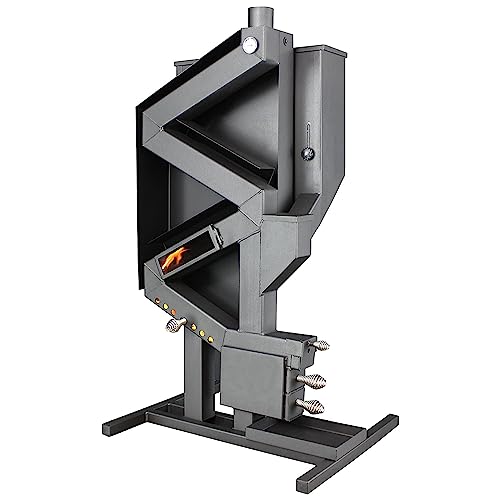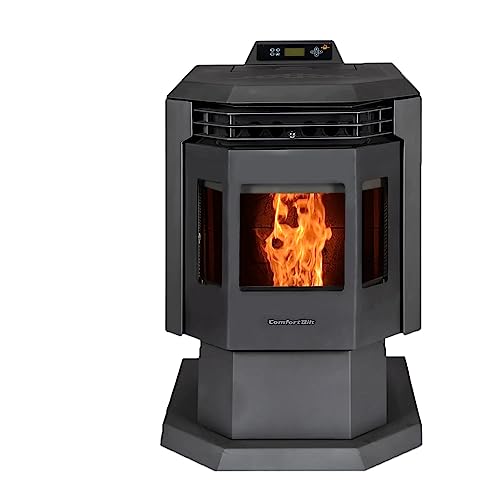 Small Pellet Stoves
Small Pellet Stoves
 Small pellet stoves are an excellent alternative to traditional heating systems for homes. These stoves use solid combustible pellets made from sawdust compressed, other recycled wood products, or biomass sources such as corn kernels or nuts.
Small pellet stoves are an excellent alternative to traditional heating systems for homes. These stoves use solid combustible pellets made from sawdust compressed, other recycled wood products, or biomass sources such as corn kernels or nuts.
Pellet stoves can go up practically everywhere. They do not require chimneys. They offer impressive energy efficiency and have low emissions.
Energy Efficiency
Pellet stoves employ an auger to feed the heating pellets into the combustion chamber. They then ignite them, creating heat. The process is powered by electric motors, which use a lot of electricity. Once the process of combustion has begun the stove’s power consumption is reduced dramatically.
The majority of pellet stoves have fans that circulate warm air generated through the process of combustion around the home. They use electricity to run, but the amount they consume is generally quite low in comparison to other household appliances. If you’re looking to cut down on the electricity consumption of your pellet stove, consider selecting models with low-power fans as well as a digital control panel. Be sure to correctly position the stove in your home to ensure optimal heat distribution.
Another way to reduce your pellet stove’s electricity consumption is to regularly clean the ash pan and exhaust venting system. This will keep the stove running smoothly, and prevent the build-up of ash that can cause efficiency issues.
Finally, make sure you purchase high-quality heating fuel pellets that meet EPA standards. Poor quality fuel can degrade the performance of your stove.
outdoor pellet stove stoves can be used as a supplement to wood or gas-burning fireplaces and heaters. They are also cheaper to run than many home heating systems and produce much less dust than traditional wood-burning furnaces.
When you are comparing models, consider the size of the hopper that is on the stove and how long it will run before you have to refill it. A hopper with a larger capacity will be able to hold more pellets and require refilling less frequently.
Be sure to have a backup plan in case of power failures, as the majority of pellet stoves require electricity to run their automated features. Your stove will continue to function when you have an emergency generator or battery backup. However, the fan and automatic feed mechanisms will not work.
Environmentally Friendly
The fact that pellet stoves don’t require chimneys gives them much more flexibility than other heating options. A small pellet stove is easily installed anywhere in the home where a vent pipe can allow smoke to vent out. Installing the stove must be done by a professional to ensure your safety as well as the proper operation.
Another great benefit of pellet stoves is that they don’t emit much particulate matter, unlike wood burning fireplaces. Wood stoves can produce fine dust particles that can be harmful to some people. This is particularly true for infants and those suffering from respiratory issues such as asthma. They can also be harmful to people suffering from allergies and bronchitis. Carbon monoxide, which is generated when wood is combusted can cause fatalities in extreme instances.
Pellet stoves, on the other hand, are famous for their low emissions of carbon dioxide and greenhouse gases. The fuel they use is also made from recycled biomass, such as sawdust or agricultural wastes that are discarded. Yale Environment 360 reported that replacing coal with pellets could reduce CO2 emissions by up to 78%.
Pellet stoves are also more user-friendly than traditional wood and coal stoves. You can regulate the room’s temperature with the thermostat and will not have to continually refill your fire with wood pellets or logs. A single “batch” of pellets could last for several hours dependent on the stove’s model as well as the heating requirements of your home.
Some models, like the Englander Countryside Pellet Stove offer even more convenience by offering a thermostat-compatible hopper. This lets you select the desired temperature and then leave the house without having to refill the hopper once more.
While pellet stoves require electricity to run their automated features like the pellet feeder and fans, this is minimal compared to other household appliances. While they can still work in the event of a power outage however, it is best rated pellet stoves to prepare for a cold snap and have a backup heating option. In the event of a power outage it is important to ensure that the automatic ignition system and the fan are turned off to prevent fire dangers.
Easy to Operate
Pellet stoves are based on a simple idea that removes the hassles and mess that come with traditional wood-burning fireplaces. They burn small cylindrical pellets of sawdust that has been compressed, or other wood byproducts which are stored in a firebox known as a”hopper. With an auger powered by electricity, the pellets are then fed into the burn pot to create flames that produce heat for heating your home. The air produced by the flames is blown into a heat-exchanger, which ejects smoke and particulates out of your home.
miniature pellet stove stoves are powered by electricity and not fuel oil or gas. This includes the fans and pellet feed mechanisms. They are therefore more susceptible to power failures and may require a different heating system while the generator is being repaired. They also create noise, resulting from both the pellets and the fans feeding mechanism, though modern designs are designed so that these effects are minimized.
The US Stove R5824, which is a compact and inexpensive pellet stove, is an excellent stove that can be used to heat your home. It has an EPA-certified stove that has been rated as having 80 percent efficiency. This means that you can expect to save a substantial amount on your heating bills over time, which makes it one of the cheapest pellet stoves on the market. The R5824 also has an ash pan and a blower that is easy to empty, and comes with automated controls that make operation simple.
Most pellet stoves are self-regulating, and utilize sophisticated control systems that ensure constant temperature output based on the desired temperature. You may even discover that the model you pick comes with features that will notify you when you have to add fuel or clean out the ash. This makes it easier to understand the operation of your stove.
Pellet stoves can also be an excellent alternative to a chimney. They can be put in without a chimney. This allows them to be used in rooms that would otherwise be inaccessible or impractical for a wood-burning stove, like bathrooms and basements.
Economic
Pellet stoves use a wood-based fuel that is an excellent source of renewable energy. They emit less carbon dioxide per BTU as compared to furnace oil or gasoline. The fuel is made from sawdust that has been recycled and other products of lumber mills that could otherwise end up in a landfill. As an alternative certain people opt for biomass pellets made from agricultural waste like corn or switchgrass instead of wood chips.
The heat exchanger inside your stove will take in the heat produced by the pellets. The blower circulates heated air in your living space, while the exhaust system releases combustion gasses out to the outside. This process continues to keep your temperature at the desired level.
These stoves can function as your primary source of heating when they’re properly sized for your home, and fueled with high-quality pellets. They typically produce enough heat to warm rooms up to 1500 square feet. If your home is bigger, you may need an additional room heater to increase the stove’s performance.
The majority of models have an electric ignition and at least one thermostat, making it much easier to use than wood or gas stoves. Certain models come with advanced features, such as remote control, smartphone connectivity or internet connectivity, and programmable setting.
Wood pellet stoves don’t require chimneys, which eases installation and reduces the cost of installation. The system is vented by a small exhaust pipe which can be positioned vertically or horizontally through the roof. The venting method also decreases maintenance compared to maintaining a traditional chimney.
A small pellet stove’s fuel hopper has a large capacity, providing an extended period of autonomy prior to when it has to be replenished. At low power the stove can run for up to 30 hours without the need for a refill.
These stoves are convenient, but they require some care. You’ll need to clean the heat exchanger, venting system and ash trap, as well in emptying and loading the hopper. Keep the pellets dry, as moisture can alter the performance and reduce the life span of the stove.
